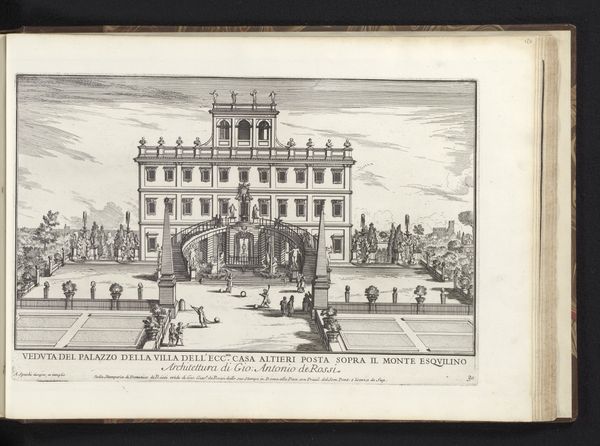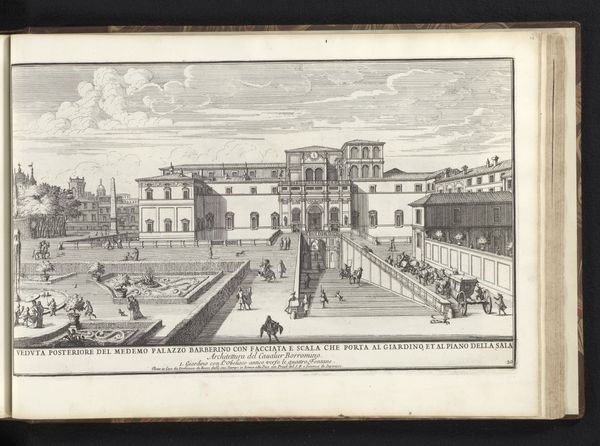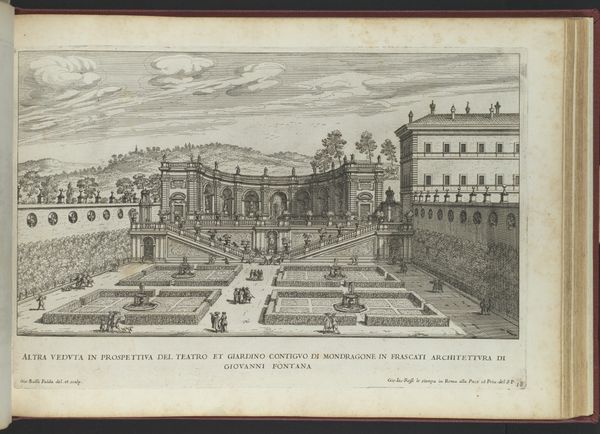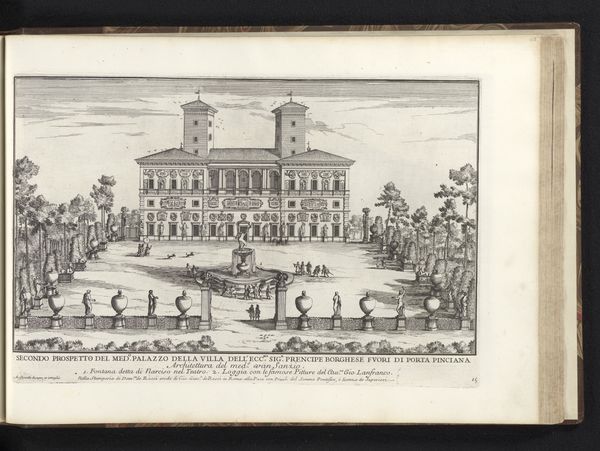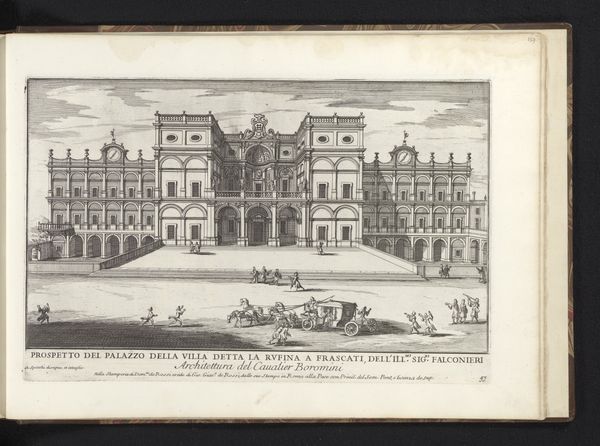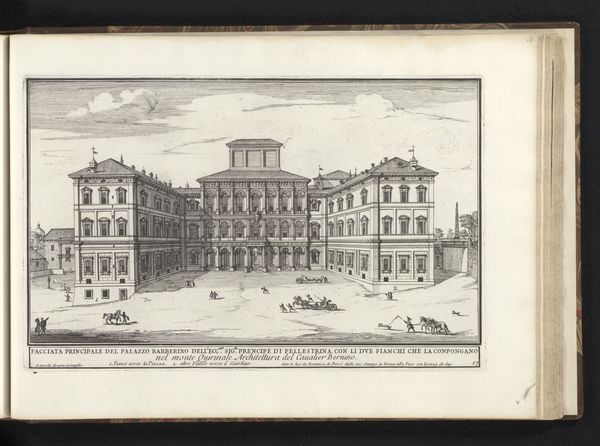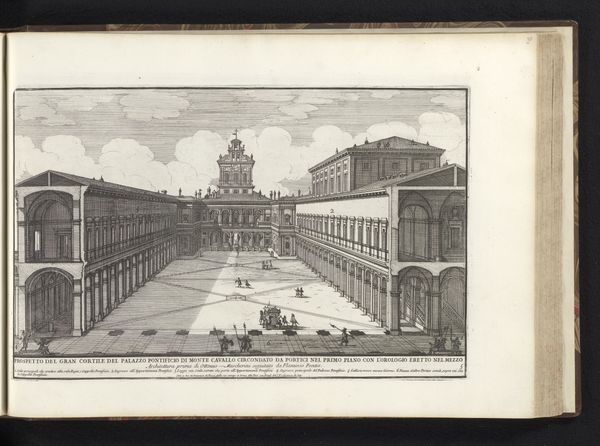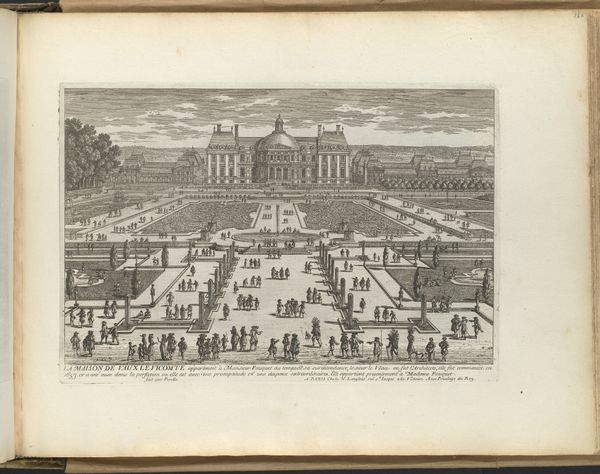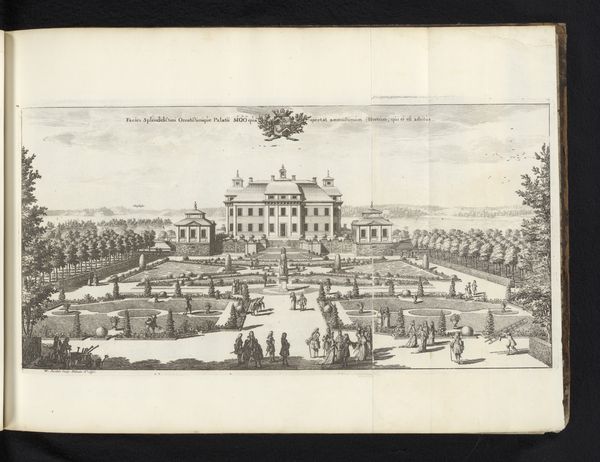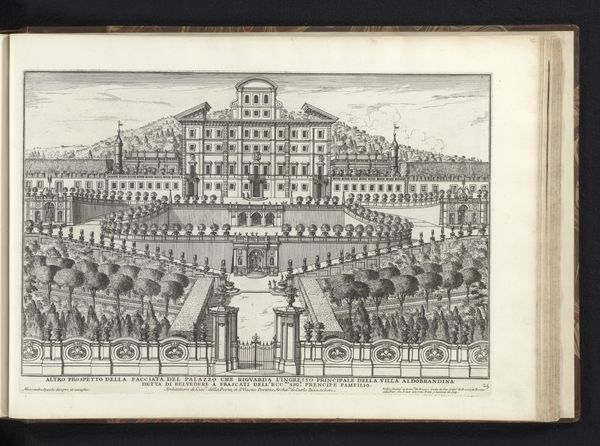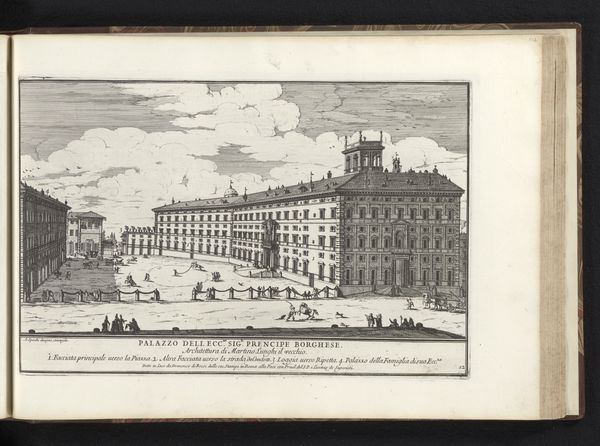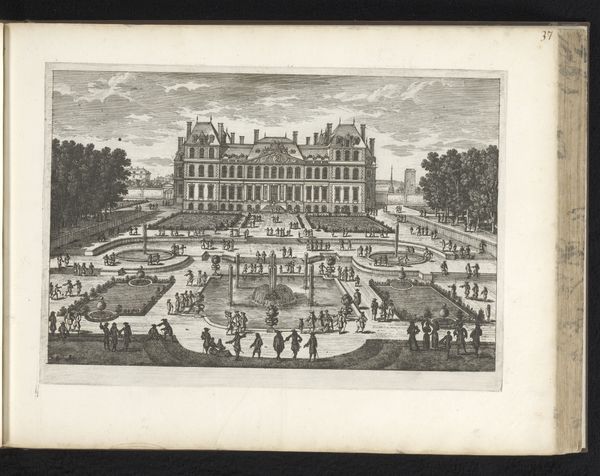
print, engraving, architecture
#
baroque
# print
#
landscape
#
classical-realism
#
cityscape
#
engraving
#
architecture
Dimensions: height 220 mm, width 333 mm
Copyright: Rijks Museum: Open Domain
Curator: This engraving from 1699, "Achterzijde van de Villa Medici te Rome," is attributed to Alessandro Specchi. What strikes you first about it? Editor: Its austerity. Even the depiction of figures in the courtyard feels stiff, carefully placed. It's like a stage set more than a lively scene. Everything is about line and rigid formality. Curator: Precisely. The work adheres strongly to Baroque principles of design with its pursuit of balance and perfection. The carefully arranged architectural details guide our eyes upwards in defined planes. There’s a clarity of form that's quite remarkable in how it emphasizes the classical ideals. Editor: Look at how the medium affects this rigidity, too. The engraving technique demands precision, of course. It reduces the architectural wonder into these sets of uniform markings to construct an idea about status through craftmanship, even labor. And what must the labour have been? Curator: Interesting perspective. This type of printmaking in the Baroque era speaks to the dissemination of aesthetic and architectural ideas, doesn't it? Its accessibility via print allowed for widespread influence. Look, for instance, at how the use of perspective manipulates our relationship with space, framing and ordering the whole landscape. Editor: Well, but think about that labor further – the paper-making process, the work involved in each of these tiny etching lines; not so different from tapestry-making or metalworking. Are those "high" and "low" processes, truly, when considered in the context of the making? Curator: Perhaps. This certainly pushes us to consider art outside of a straightforward representational realm. I think I have found a new appreciation of this piece’s rigorous composition and attention to its own making, through our dialogue! Editor: And for me, it has given some fresh considerations about how we value some laborious artistic actions more than others. A very Baroque point of inquiry, in and of itself.
Comments
No comments
Be the first to comment and join the conversation on the ultimate creative platform.
